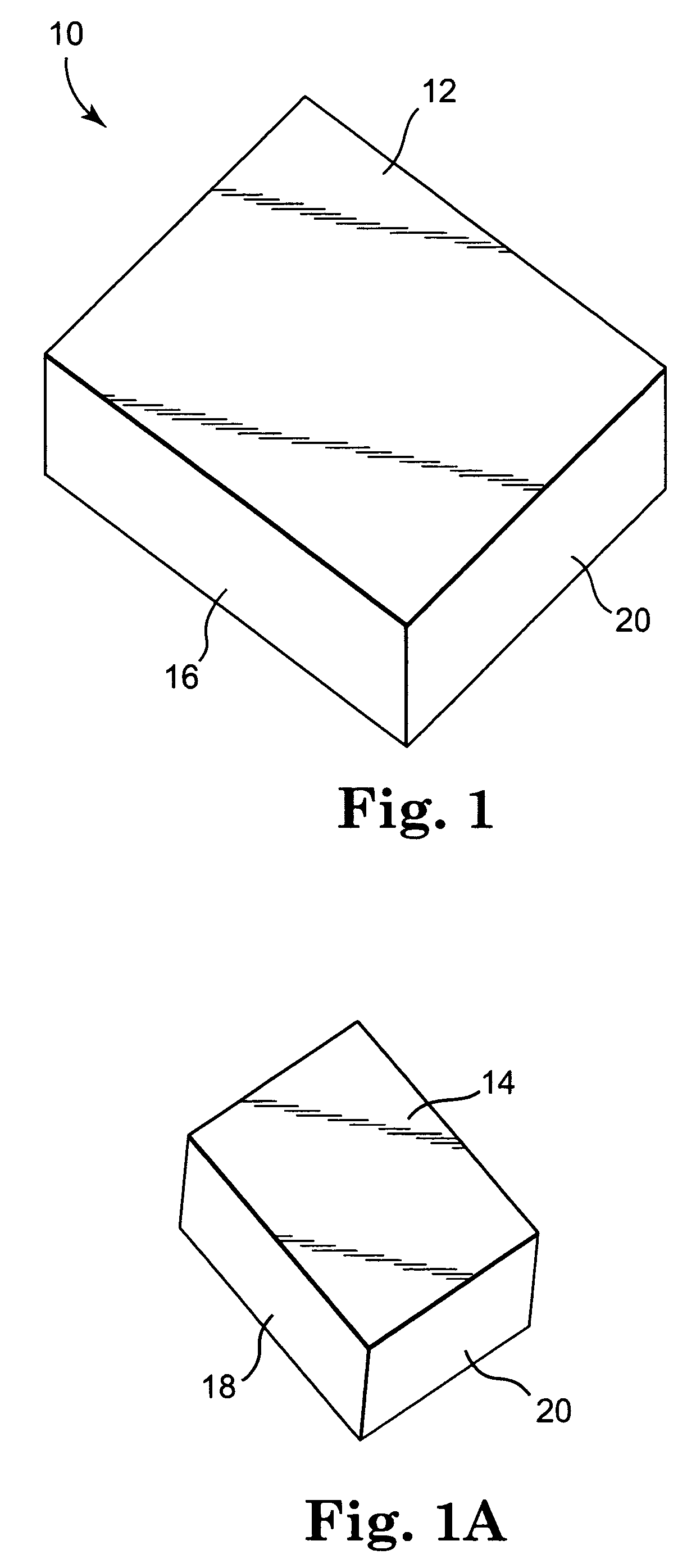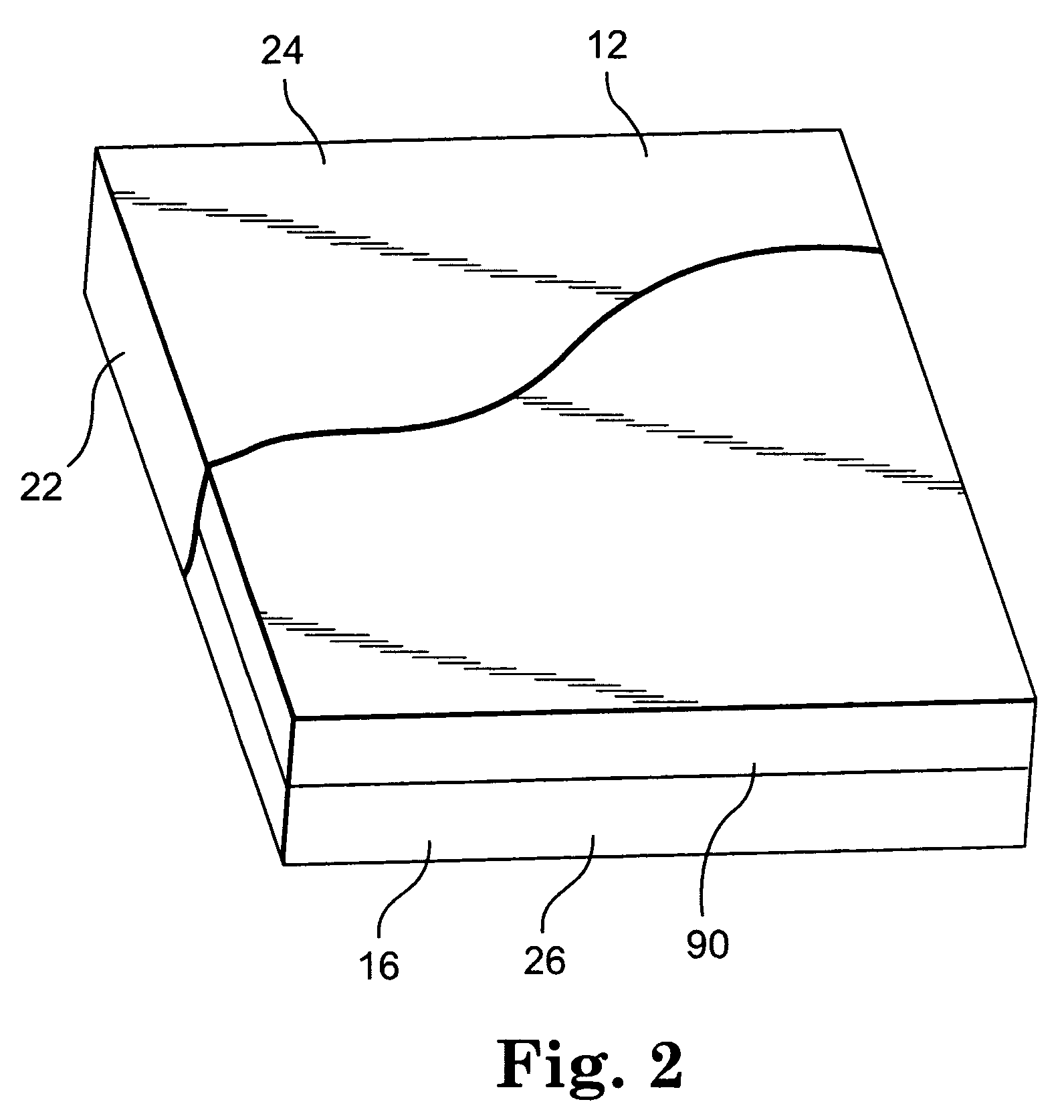Cushion for a wheelchair
a wheelchair and cushion technology, applied in the field of wheelchairs, can solve the problems temperature related stress on the skin under these conditions even worse, and cellular metabolic deficit or cellular stress, so as to reduce the likelihood of pressure sore formation for users, reduce the likelihood of pressure sore formation, and reduce the effect of temperatur
- Summary
- Abstract
- Description
- Claims
- Application Information
AI Technical Summary
Benefits of technology
Problems solved by technology
Method used
Image
Examples
Embodiment Construction
[0032]Referring to FIGS. 1, 1A, and 2, cushion 10 is a first embodiment of a wheelchair cushion designed to fit in a seat area of a wheelchair and be sat upon by a user of the wheelchair. Cushion 10 can have a rectangular shape, although its overall shape can be made to vary widely. Cushion 10 typically has six surfaces, defined for the purposes of this document as a top surface 12, a bottom surface 14 that opposes the top surface 12, a front surface 16, a back surface 18 that opposes the front surface 16, a left-side surface 20 and a right-side surface 22 that opposes the left-side surface 20. Cushion 10 has a width defined as a distance (typically 12–26 inches) from the left-side surface 20 to the right-side surface 22, a depth (typically 12–18 inches) defined as a distance from the front surface 16 to the back surface 18 and a thickness (typically up to 6 inches) defined as a distance from the top surface 12 to the bottom surface 14. These dimensions can be varied to suit a parti...
PUM
 Login to View More
Login to View More Abstract
Description
Claims
Application Information
 Login to View More
Login to View More - R&D
- Intellectual Property
- Life Sciences
- Materials
- Tech Scout
- Unparalleled Data Quality
- Higher Quality Content
- 60% Fewer Hallucinations
Browse by: Latest US Patents, China's latest patents, Technical Efficacy Thesaurus, Application Domain, Technology Topic, Popular Technical Reports.
© 2025 PatSnap. All rights reserved.Legal|Privacy policy|Modern Slavery Act Transparency Statement|Sitemap|About US| Contact US: help@patsnap.com



